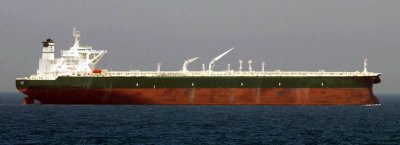
[This is another in my occasional series of half-baked ideas for saving the world. If you can actually make this idea work, it is all yours, and a grateful planet will thank you.]
As you probably know, the climate crisis is due to the greenhouse effect, in which the Earth absorbs more energy from the sun than it is able to shed back into space, causing the planet gradually to grow warmer and warmer. This is a change from the past, when the Earth’s “energy budget” — the amounts of arriving and departing energy — was more or less in balance.
The problem is that a lot of solar radiation reaching the Earth is in the form of ultraviolet light, which is easily able to pass through the atmosphere and reach the surface, where it heats things up. Hot things emit infrared light, and if enough of that can escape back into space to offset the incoming ultraviolet, all is well.
But carbon in the atmosphere blocks infrared from escaping — while doing nothing to reduce the amount of ultraviolet getting in. All substances absorb some wavelengths of light and not others; that’s simply “color.” (Ultraviolet and infrared are just colors our eyes can’t perceive.) When it comes to the gases in the atmosphere, the color hand we’ve been dealt is: let in UV, trap IR. It seems unfair, but chemistry doesn’t care about your feelings.
The politics of our age make it doubtful we can rebalance the energy budget by meaningfully reducing the amount of carbon in the air in a useful timeframe. Too bad we can’t convert the infrared getting trapped back into ultraviolet that can escape, as an alternative.
Or… can we?
Much of what the sun heats up is ocean — naturally, since that’s most of the Earth’s surface. The warming of the oceans is associated with more-intense storms, acidification and coral bleaching, imperiling the Gulf Stream, and a host of other ills.
Most of the warming of the oceans is confined to the upper few hundred feet of depth. Below that in most places is a thermocline — an abrupt temperature drop, with much cooler water below, mostly isolated from the warming effects above.
The thermoelectric effect is a physical phenomenon that can convert a difference in temperature into an electric current.
Putting all of the above together, here’s the idea: build a buoy that floats on the ocean. Beneath the buoy, a long wire extends down past the thermocline. The difference between the surface temperature and the temperature at depth creates a current in the wire — small, but continuous. The current is used to power an ultraviolet laser in the buoy, aimed at the sky. It shines weakly, but continuously, steadily drawing heat from the ocean and beaming it into space.
With enough of these simple, inexpensive units built and deployed, we should be able to offset the greenhouse effect. Doing the math on how many that would be is left as an exercise for the reader. Undoubtedly it would take thousands, perhaps millions, of UV-laser buoys floating in oceans all around the world.
One thing is for sure, though: if this solution works, saving the world wouldn’t be the only cool thing about it. An alien looking at the Earth from space, with eyes that can perceive ultraviolet rays, would see a spinning celestial disco ball.

